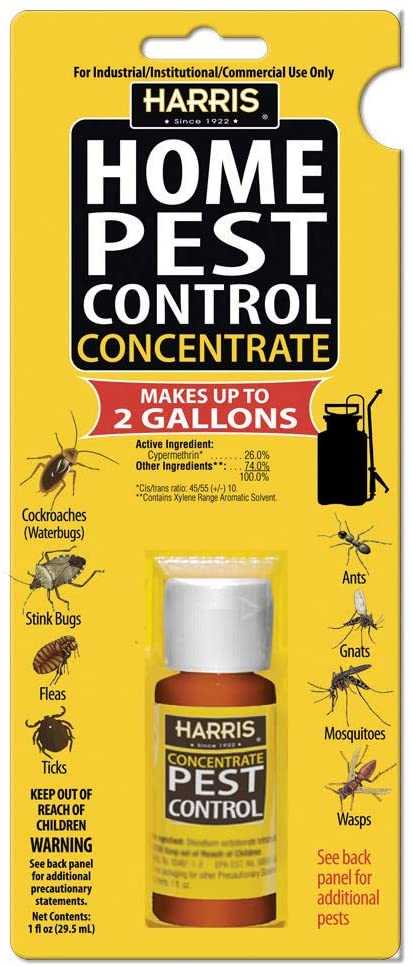A1 Pest Control Charlotte NC Bed Bugs - Specialist Extermination Services
A1 Pest Control Charlotte NC Bed Bugs - Specialist Extermination Services
Blog Article
Bed Insect Treatment Malfunction: Contrasting Chemical Vs. Non-Chemical Solutions
In the realm of insect control, particularly when taking care of the relentless issue of bed insects, the selection between chemical and non-chemical treatment services can be a crucial one. Both methods offer unique advantages and downsides, affecting aspects such as effectiveness, security factors to consider, and total price. By checking out the nuanced information of each method, a clearer understanding of which course to go after in attending to a bed insect problem can be acquired.
Effectiveness of Chemical Therapies
Chemical therapies for bed pest problems have actually been extensively recognized for their fast and potent efficiency in getting rid of these pests. When thinking about the effectiveness of chemical therapies, it is essential to understand that they can offer a quick and complete service to a bed bug issue. Expert pest control men commonly count on pesticides to target bed pests at numerous stages of their life cycle, including eggs, nymphs, and adults. These chemicals normally work by disrupting the bed pests' nervous system, causing paralysis and eventual fatality.
Additionally, chemical treatments have the benefit of offering recurring impacts, implying that they can remain to eliminate bed pests also after the preliminary application. This residual action is specifically advantageous in combating any prospective re-infestations. In addition, the fast activity of chemical treatments can bring alleviation to people dealing with extreme bed insect infestations, permitting them to restore control of their living areas rapidly.
Security Problems With Chemical Solutions
One critical element that requires cautious factor to consider when making use of chemical solutions for bed bug treatment is guaranteeing the security of passengers and the environment. Direct exposure to certain chemicals made use of in bed insect therapies can lead to breathing issues, skin inflammation, or other adverse reactions, particularly in people with pre-existing conditions or sensitivities.
Furthermore, the environmental effect of chemical solutions is one more substantial consideration. Some chemicals used in bed pest treatments may be harmful to beneficial pests, wildlife, and environments if they seep into the dirt or water systems. It is essential to utilize chemical therapies carefully, adhering to security standards, and considering much less poisonous alternatives to alleviate these threats and make sure the effective and secure administration of bed bug problems.
Advantages of Non-Chemical Techniques
Considering the prospective security worries and ecological effect related to chemical remedies for bed bug therapy, exploring non-chemical techniques provides an appealing choice with several distinct benefits. Non-chemical methods provide a more secure option for homes, particularly those with pet dogs, kids, or people conscious rough chemicals. These approaches eliminate the threats of direct exposure to hazardous substances, reducing the potential for damaging wellness impacts. Furthermore, non-chemical therapies are eco-friendly, my sources as they do not contribute to air or water pollution, making them a sustainable selection for bug control.
In addition, non-chemical solutions can be efficient in targeting bed bugs, consisting of hard-to-reach locations where chemical therapies may not penetrate - A1 pest control charlotte nc bed bugs. Techniques such as warmth therapy, vacuuming, steam cleaning, and mattress encasements supply thorough removal without the usage of harmful chemicals.
Limitations of Non-Chemical Treatments

Furthermore, non-chemical therapies typically call for multiple applications to accomplish effective removal. This can be taxing and might not always ensure total removal of all bed pests and their eggs, especially in covert or hard-to-reach places.
Furthermore, the success of non-chemical therapies heavily depends on proper application and thoroughness, which can be challenging for individuals without professional experience. Insufficient application of non-chemical methods might cause incomplete eradication, leading to persistent invasions and the requirement for extra therapies.
For that reason, while non-chemical therapies have their benefits, it is vital to acknowledge these limitations and consider them when establishing the most effective method for handling bed insect problems.
Price Comparison: Chemical Vs. Non-Chemical Options
Given the limitations associated with non-chemical treatments, a crucial facet to review in the context of bed insect administration is the cost comparison between chemical and non-chemical options. Chemical therapies commonly involve the application of insecticides by professionals, which can range from $250 to $900 per area, relying on the intensity of the invasion and the size of the area to be dealt with. On the other hand, non-chemical treatments like heat treatment or steam can be more pricey, with expenses ranging from $1,000 to $6,000 for an entire home. While the preliminary price of chemical treatments may appear reduced, several treatments might be needed to completely get rid of the invasion, potentially raising the general cost. when to do pest control for home On the other hand, non-chemical choices might give a much more sustainable and green option, although they can be cost-prohibitive for some individuals. Inevitably, when considering the cost of bed insect treatment choices, it is essential to consider the ahead of time costs versus the efficiency and long-term sustainability of the selected approach.
Final Thought

Taking into consideration the possible security problems and environmental effect connected with chemical remedies for bed bug treatment, discovering non-chemical approaches provides an encouraging choice with a number of distinct benefits.Provided the restrictions connected with non-chemical therapies, a crucial aspect to assess in the context of bed insect monitoring is the price contrast between chemical and non-chemical choices. In contrast, non-chemical treatments like warm therapy or heavy steam can be extra expensive, with costs ranging from $1,000 to $6,000 for a whole home. While the first cost of chemical therapies might appear reduced, multiple therapies might be needed to completely eradicate the problem, potentially boosting the overall expense.In verdict, when contrasting chemical and non-chemical bed insect therapy options, it is vital to take into consideration effectiveness, security, benefits, restrictions, and expense.
Report this page